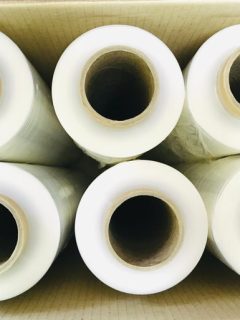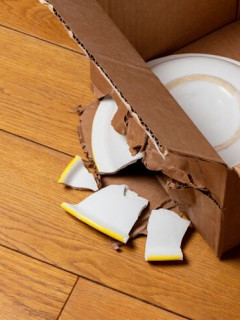Sweets are one of the most popular gifts that will prove useful on numerous occasions. It’s not just the little ones who love them, so you can also give them to adult gourmands. Wondering how to pack sweets for a gift so that they are not only a tasty surprise, but also a visual masterpiece? Discover some inspiring ideas!
What to wrap sweets in for a gift?
There are plenty of possibilities for wrapping sweets – from simple packaging to more elaborate ideas. The key is to choose the right material and style to suit both the occasion and the type of sweets.
What to wrap sweets in? Below you will find a list of packaging accessories that may come in handy.
- Gift boxes – ideal for larger sets of sweets. Elegant boxes can be decorated with ribbons or labels. They work well for both festive occasions and birthdays.
- Wrapping paper – the classic solution for fast and aesthetically pleasing wrapping of sweets. You can choose from a variety of designs and colours to perfectly match the occasion. Gift wrapping paper also allows you to wrap irregularly shaped sweets.
- Gift bags – convenient and elegant, perfect for wrapping smaller sweets or sets. Gift bags are easily customised with personalised items
- Decorative fillers – perfect for filling boxes and bags to add a touch of elegance. At the same time, they add volume and protect delicate products from damage.
- Ribbons and bows – indispensable if you want the whole thing to look attractive.
Gift wrapping ideas for sweets
Various forms of sweets – sweets, chocolates, lollipops – can be wrapped in a unique way, giving them an individual character. Make it original with the ideas below!
Sweets wrapped like candy
If you’re looking for a simple but effective idea for wrapping sweets, consider wrapping them in the shape of a candy. Simply wrap the sweets (e.g. a packet of sweets or chocolates) in coloured gift paper and tie the two ends together with decorative ribbons.
This classic way is quick and simple, but always looks charming and eye-catching. It’s particularly good for small, individually wrapped sweets, which create a striking ‘ball’ inside the packaging.
Sweets in a jar
A jar filled with sweets is a great gift idea for the gourmand. You can put different types of sweets, jelly beans or chocolates inside and decorate the whole thing with a ribbon and a label with a personal message. It’s a very stylish way to wrap sweets that is suitable for many occasions. Filling a jar with colourful sweets is also a great idea for a decorative touch in the home.
‘Country’ style boxes
Opting for a rustic style, you can pack sweets in small wooden boxes or baskets. Filled with natural fillings and decorated with jute twine and delicate flowers, they will add an idyllic, natural charm to the gift. This type of gift wrapping is especially suitable for the holidays or as a gift for parties with friends.
Candy cones
Paper cones filled with sweets are a simple but very attractive solution. You can make your own cone from decorative paper and fill it with colourful sweets, chocolates or jellies. You can close the whole thing on top with a decorative ribbon or bow. This is a great way to wrap up sweets for birthdays or children’s parties, for example, and at the same time a solution for how to wrap an unusual gift.
Gift baskets full of sweets
Gift baskets are a classic that always make an impression. You can put a variety of sweets in the basket to make a complete set. The whole thing is wrapped in cellophane and tied with a ribbon, which adds elegance and chic. This kind of gift is perfect for more formal occasions, such as Christmas presents for loved ones. Wrapping Christmas gifts will then become much easier.
Wrap your gift sweets imaginatively!
As you can see, there are really many ways on how to nicely package sweets for a gift. You can choose classic solutions such as boxes and bags, or you can bet on creativity by creating your own gift wrapping in unusual forms.
Consider adding personalised touches, such as handmade name tags with the recipient’s name on them. You can also experiment with materials, such as using fabrics or eco-friendly solutions instead of traditional paper.













